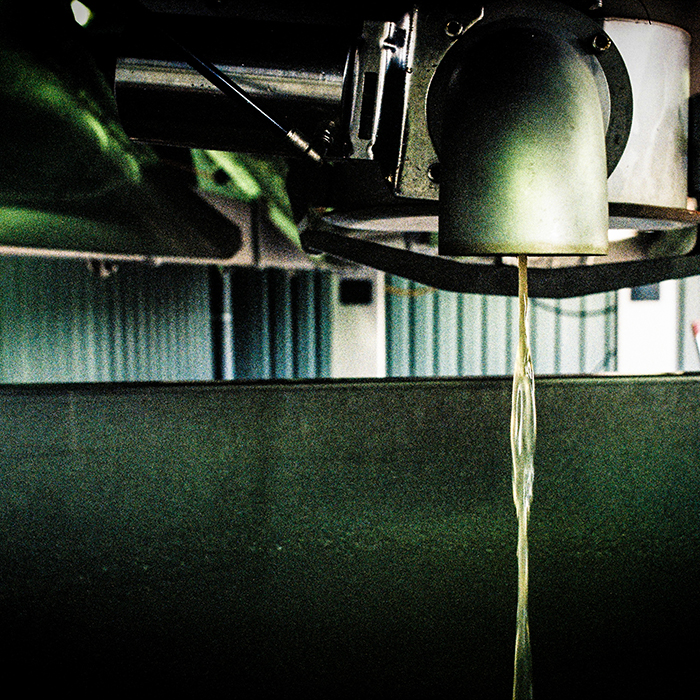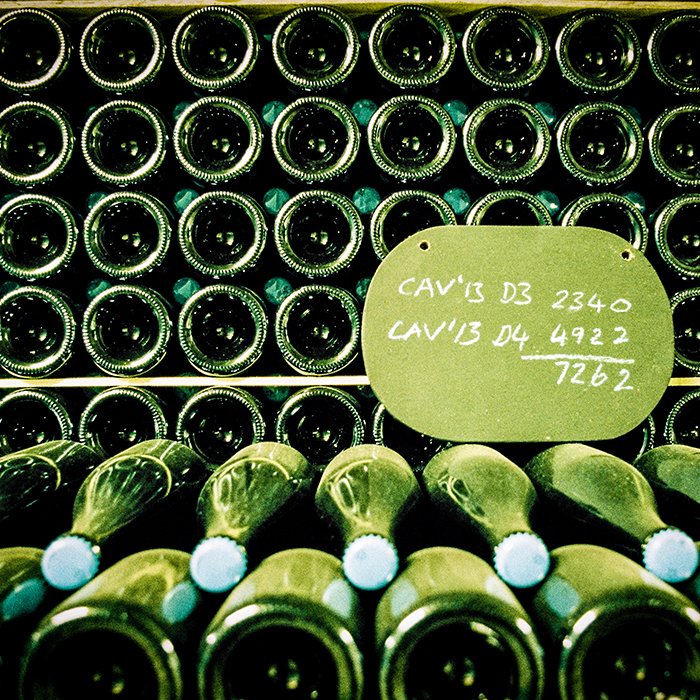How to make wine: sparkling
Author: Barbara Drew MW

Juice trickles out the press at Ridgeview, Sussex. Photograph: Simon Peel
What makes a wine go fizz, or a cork go pop? Tiny bubbles of carbon dioxide dissolved in the liquid. The question of how the carbon dioxide gets into the wine, though, is a very important one, as its answer determines the style of wine and the flavours that result.
The first step in making a sparkling wine is to make a base wine – a still wine which can then develop bubbles. A few wines avoid this step – such as the sweet, frothy and delicate Moscato d’Asti – but for most fizzies, a base wine is required. This is invariably white. Bubbles in a wine accentuate tannins – making a red wine seem even more grippy and astringent than it would normally. As a result, those rare red sparkling wines that do exist tend to have a hefty dose of sugar in them to balance out this effect; think syrupy sparkling Shiraz, or refreshingly sweet and sour Lambrusco.
The simplest way of adding bubbles is to take your base wine, add it to a large tank with yeast and sugar, to encourage a second fermentation, and pop the lid on. The carbon dioxide produced during the second fermentation is trapped in the tank. The wine is filtered under pressure and put into heavy sparkling wine bottles. (In theory, a sparkling wine bottle should be able to withstand pressure of 15 atmospheres; most sparkling wine is around five or six atmospheres. Nonetheless, a sharp shock to the bottle can result in them exploding.)
This method of producing sparkling wine is known as the tank or Charmat method and is a great way to produce large volumes of fizz. It is often used for Prosecco as it doesn’t add any additional flavours to the wine, and can preserve the fruity, floral characters of the Prosecco grape (Glera).
In Champagne, a different method is used. Here, after sugar and yeast are added to the base wine, the wine is bottled, before being sealed. The wine then undergoes its second fermentation – leading to an increase in alcohol of 1.5 percent and the production of those carbon dioxide bubbles – in the bottle. Crucially, once the fermentation is complete, the wine then stays in-bottle. The yeasts settle to the bottom of the bottle and remain there, adding flavour and texture to the wine.
Most wines made like this remain resting on their lees – these yeast cells – for at least a year, and in the case of some prestige cuvée Champagnes (the very top wine a Champagne House releases), for up to eight years. During this time, the yeast cells start to break down and add a biscuity, brioche flavour to the wine, as well as a slightly creamy texture. The result is a marvellously complex wine, but one that tastes more of pâtisserie than peaches and pears; this process therefore works very well for slightly less aromatic grape varieties, such as Chardonnay, a popular grape for this style of wine.

Bottles resting on their lees at Ridgeview, Sussex. Photograph: Simon Peel
Though arguably invented in the UK, and perfected in Champagne, this method of making sparkling wine is used around the world, and excellent fizz is produced in this way in California, South Africa, Australia and Spain; all Cava must be made in this way, lending a toasty complexity to this Spanish speciality.
The downside of this méthode traditionelle (as it is known), however, is that, after the wine has aged, the yeast cells still need to be removed from the bottle. In previous centuries, consumers were more forgiving of murky wines, with yeast deposits in the bottle, and while the natural wine movement is trying to reinvigorate this style of wine to a certain extent, most wines need to be sold clear and bright. Therefore the next step in this process is to remove the yeast from the bottle, while keeping the fizz, which is not an easy task. The yeast must first be nudged down to the neck of the bottle, something that can be achieved manually by turning the bottle this way and that over the course of many weeks. Machines called gyropalettes do a similar job, gently shaking the bottles over the course of a couple of days. Once in the neck of the bottle, the yeast is frozen – the neck being dipped into a cold brine solution – before the cap is removed. At this point the pressure inside forces the yeast out of the bottle.
The final step is to adjust the flavour of the wine, and standardise the level in the bottle, with dosage; this is a mixture of sugar and wine, which adds the final gloss to the fizz. For Champagne, which is often extremely acidic, this tiny addition of sugar is just sufficient to add a richness to the wine and balance the tart freshness of the grapes. For making a rosé sparkling wine, the colour can also be tweaked by adding a drop of red wine at this point.
The wine is then closed with a cork and left for a few months, quietly resting in the producer’s cellar, for the flavours to blend and harmonise. Due to the acidity and complexity of wines made in this way, they can often age for many years, developing even more toasty, nutty and finally mushroom flavours. Whether they are drunk young or old, these are some of the most complex and carefully made wines to be found anywhere in the world.
This article was originally sent to members of our Wine Club. You can find out more about the benefits of Wine Club here. You’ll find the first two parts of this series, looking at still white and red wine, here; or browse our range of sparkling wine here.


